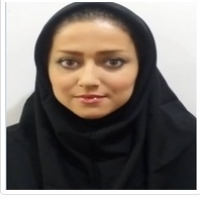Study of Armenian Tombstones in Sang-e Sefid, Aligudarz
Due to their special connections with humans, tombstones can be a proper manifestation of people’s beliefs and opinions from different areas. Special patterns on some tombstones, some of which are uniquely engraved, and some others are occasionally repeated show the importance of tombstones (the engraved images semiology), and the idea of our ancestors about death. The cemeteries built by the Armenian minority during various periods are a sign of the historical coexistence of Armenians and the Muslim majority. Therefore, this study seeks to evaluate Armenian tombstones in Sang-e Sefid, Aligudarz city and study the relationship between the engravings on tombstones and thoughts and beliefs of Armenians living in Sang-e Sefid in the last 100 years through field and library research (especially primary sources such as Armenian books and articles). The question we are trying to answer is: What kind of symbols and concepts are used in the tombstone engravings in Sang-e Sefid cemeteries? Epigraphs, humans (men and women), winged angels (scarfs, couple and symmetrical), tools (scissors, chains, crosses, and canes), plants (lilies and vases), celestial objects (sun), symbols (Khachkar), animals (eagles) and most importantly, oval and Mihrab-shaped frames were used to organize and arrange inscriptions and patterns with special symbolic meanings. The results indicate that the tombstones of Aligudarz were a constituent of Armenians’ culture and beliefs living in Sang-e Sefid.Building monuments for the dead was rooted in other beliefs as well. Greeks believed that if they did not bury the dead properly, their souls would wander around. In general, tombstones are an amalgam of multiple components including individual identity, community relations, mythological mind, ethnicity, and religion. In other words, when someone passed away, the essence of their existence was manifested in the engravings on their tombstones. Like tombstones of other regions in Iran, the tombstones of Sang-e Sefid are engraved with historical, cultural, social, and religious concepts of the region. It is worth noticing that human and plant engravings are almost always together which indicates the popular culture, beliefs, and tradition of that time. The tradition of Armenians living in Sang-e Sefid was rooted in Christian-European culture. Similar to other migrants, they brought their native culture to the target land.This study used a descriptive-analytic approach, and the data were collected using field and library research (especially primary sources such as Armenian books and articles). The sources for field research were direct observation, photography, and interviewing Armenians living in Iran and familiar with the engravings. For the library research, primary Armenian sources, especially a quarterly magazine published by Iranian-Armenians since 1998 was studied. Fifteen tombstones in the Armenian cemetery in Sang-e Sefid were introduced, and their engravings were compared with the data collected using the methods.Most of the tombstones found in this cemetery were horizontal while some were headstones. All the graves were in the east-west direction in the shape of boxes and boulders. The box-shaped tombstones were often bigger and the tombstones were smaller and filled with engravings.The patterns were in the form of engravings or reliefs. For reliefs, the patterns were carved out to highlight the patterns. This method was time-consuming, very delicate, and it was mostly adopted for the main patterns (humans, plants, animals, etc.). For the engravings, the patterns were engraved on the tombstone. It was mostly used for frames, writings, or small patterns.Tombstones are generally categorized into three groups.Initial or framing patterns: Frames are on the top of the tombstone. On the bottom, delicate Mihrab or sigmoid-shaped lines are drawn surrounding the stone.Middle patterns: The main patterns are in the middle including humans, plants, birds, and geometrical shapes.Finishing patterns: These patterns include Armenian script (name of the deceased, seeking forgiveness, and date of death)The local culture has a major influence on the engravings of the tombstones. From an anthropological point of view, engraved motifs are very important. In the Sang-e Sefid cemetery, there are 9 major motifs including plants, animals, geometrical shapes, sun, humans, angels, tools, epigraphs, and framings.Fifteen tombstones in the Sang-e Sefid cemetery were introduced and evaluated, and their engravings were assessed in detail. Various motifs of tombstones in the region indicated that the Armenians pay special attention to preserving the burial rites and cherishing the memory of their loved ones, and used these symbolic and geometrical engravings to highlight this fact. These patterns are inspired by the beliefs and ideas of the people living in the region, and they include human, plant, geometrical shape, animal, symbolical and even framing motifs. The symbolical aspect of these motifs is more dominant than the decorative one. This symbolical aspect is most pronounced in angel, sun, and cross motifs. Since the motifs were engraved with the transcendental world in mind, concepts such as guidance for the dead, protection and guardianship, symbol and manifestation of enlightenment, etc. come to mind. Religious motifs such as the cross, the altar of angels decorated with flowers, and the clothing are representative of the deceased’s faith, beliefs, and honesty. Rather than depicting the religious character of the deceased, such religious motifs are remnants of the ancient religious mindset of their ancestors in Armenia, many of which are rooted in the mythological culture of the Armenian people. The interesting thing about the tombstones is the motif of the cross and people with religious coverings, which seem to indicate that most of the people buried in this cemetery are Armenians who were followers of Mithraism.
Tombstone , Motifs , Sang-e Sefid , Aligudarz , Armenian
- حق عضویت دریافتی صرف حمایت از نشریات عضو و نگهداری، تکمیل و توسعه مگیران میشود.
- پرداخت حق اشتراک و دانلود مقالات اجازه بازنشر آن در سایر رسانههای چاپی و دیجیتال را به کاربر نمیدهد.



